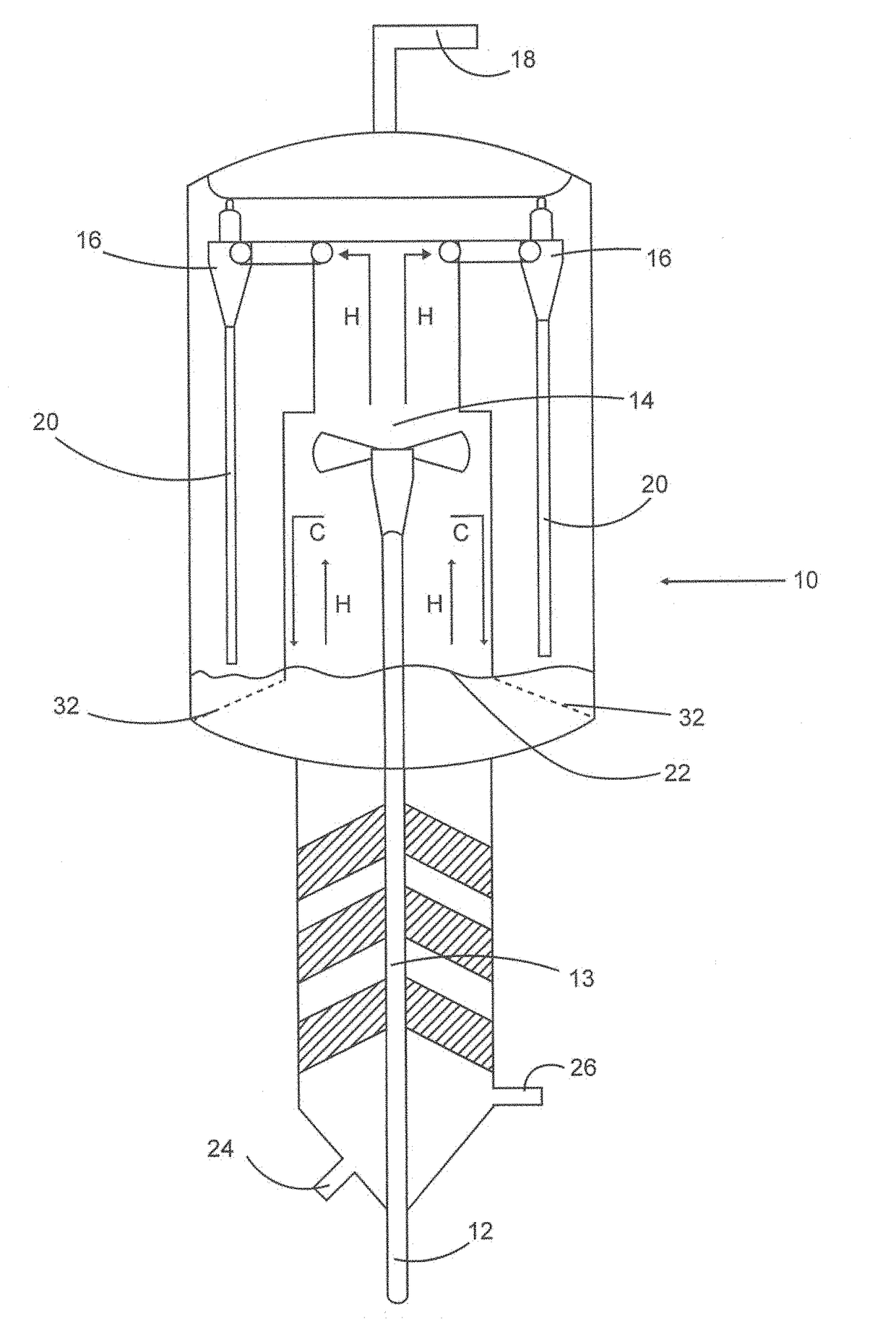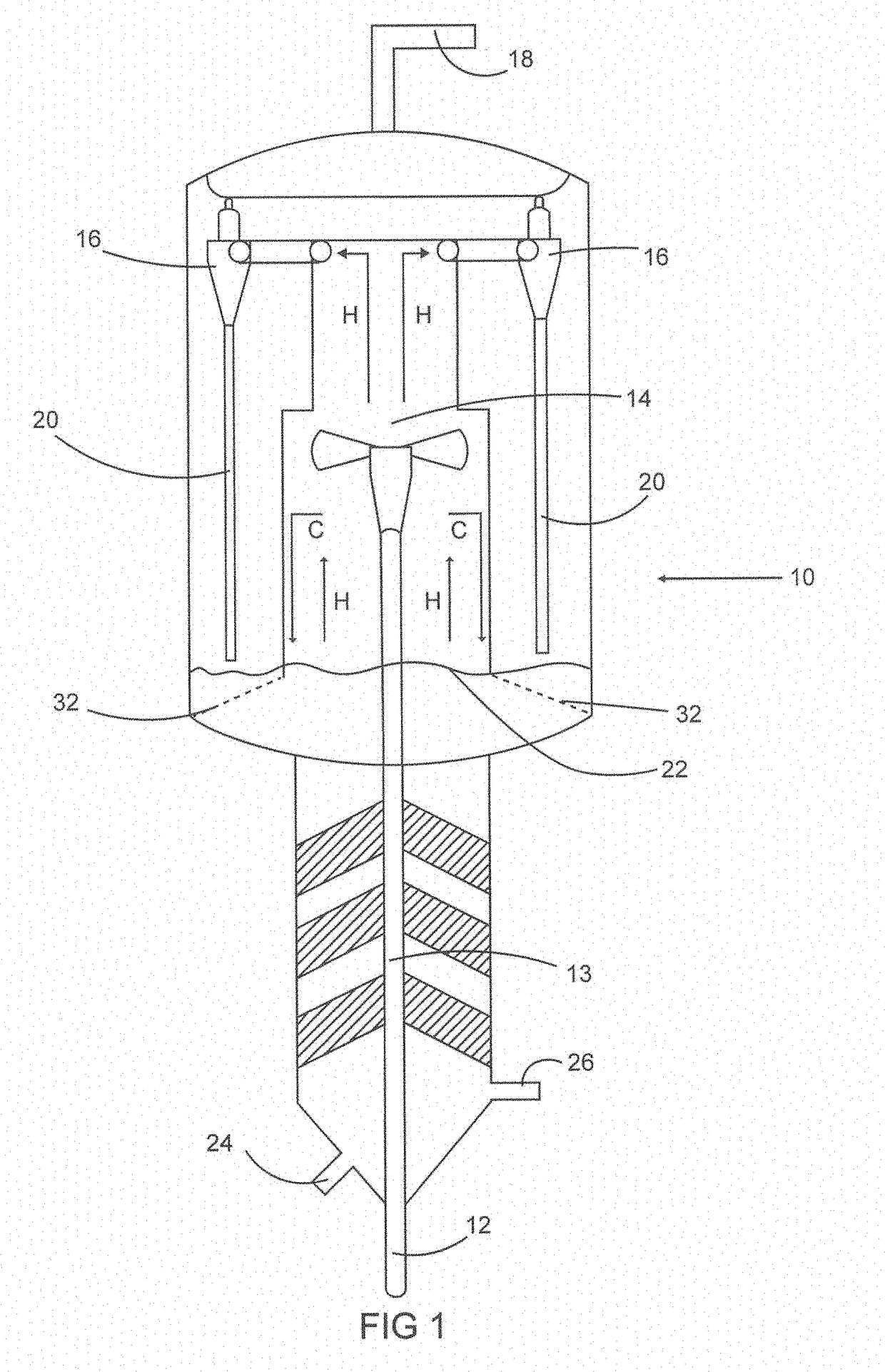Fcc yield selectivity improvements in high containment riser termination systems
a technology of high containment riser and yield selectivity, which is applied in the direction of catalytic cracking, chemical/physical processes, chemistry apparatus and processes, etc., can solve the problems of increasing the residence time between the hydrocarbon vapor and the catalyst, increasing the potential for lower hydrocarbon yield and greater catalyst fouling, and increasing the hydrocarbon underflow to the catalyst bed. , to achieve the effect of reducing the amount of undesired thermal and catalytic reactions, increasing the residence tim
- Summary
- Abstract
- Description
- Claims
- Application Information
AI Technical Summary
Benefits of technology
Problems solved by technology
Method used
Image
Examples
Embodiment Construction
[0016]Referring now to FIG. 1, a schematic depicting a FCC reactor incorporating a first embodiment of the invention is shown having a lowered fluidized catalyst bed 22 maintained just above the windows 32 of the separator or VSS 14. The reactor 10 includes an inlet 12 for receiving a mixture of heated crude oil and heated catalyst. The crude and catalyst mixture travels up the riser 13 during which the catalyst and crude internet and the catalyst absorbs carbon, metals, and other deleterious materials not wanted in the hydrocarbon gases. As the entrained hydrocarbon / catalyst mixture exits the riser and enters the separator 14 the catalyst will fall downward through the separator 14 while the clean hydrocarbon stream continues to rise where it is received by cyclones 16 which serve to further separate any remaining catalyst from the hydrocarbon stream. The cleansed hydrocarbon stream then exits the reactor through outlet 18 to be transferred to separation equipment, such as a fracti...
PUM
| Property | Measurement | Unit |
|---|---|---|
| bed density | aaaaa | aaaaa |
| bed density | aaaaa | aaaaa |
| bed density | aaaaa | aaaaa |
Abstract
Description
Claims
Application Information
 Login to View More
Login to View More - R&D
- Intellectual Property
- Life Sciences
- Materials
- Tech Scout
- Unparalleled Data Quality
- Higher Quality Content
- 60% Fewer Hallucinations
Browse by: Latest US Patents, China's latest patents, Technical Efficacy Thesaurus, Application Domain, Technology Topic, Popular Technical Reports.
© 2025 PatSnap. All rights reserved.Legal|Privacy policy|Modern Slavery Act Transparency Statement|Sitemap|About US| Contact US: help@patsnap.com



